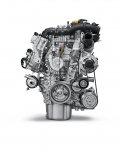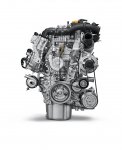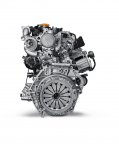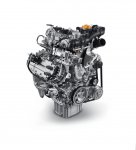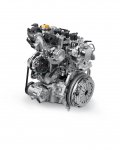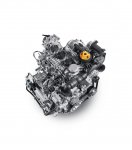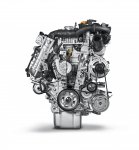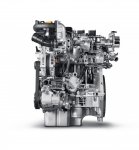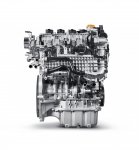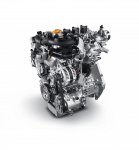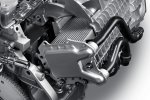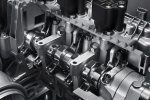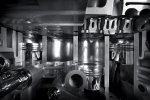http://www.fiatpress.com/press/article/new-2019-jeep-renegade
New 2019 Jeep® Renegade will be the first vehicle to adopt the innovative turbo petrol engines which maximise fuel efficiency and ensure outstanding performance both on and off-road. There are two petrol options available: a 1-liter with 120hp and a 1.3-liter with 150hp or 180hp. The engine offer is completed by a 1.6-liter 120hp and a 2.0-liter 140hp or 170hp MultiJet II turbodiesel with SCR (Selective Catalytic Reduction).
The new styling of the Jeep B-SUV is a modern take on the iconic design of the Jeep brand. Renegade off-road prowess is also expressed in its design and coexists with an urban and lifestyle appeal. Main exterior news include LED headlamps and new 19-inch wheels. Quality, increased functionality and greater comfort are offered in the cabin.
The new Renegade offers fourth-generation Uconnect with 5-inch, 7-inch or 8.4-inch displays, high-definition touchscreens, Apple CarPlay integration and Android AutoTM compatibility, so owners can always be connected.
State-of-the-art high-tech safety features, including Lane Sense Departure Warning-Plus, Intelligent Speed Assist with Traffic Sign Recognition as standard on the entire range, and Forward Collision Warning-Plus with Active Emergency Braking standard on Limited.
New 2019 Jeep® Renegade will be the first vehicle to adopt the innovative turbo petrol engines which maximise fuel efficiency and ensure outstanding performance both on and off-road. There are two petrol options available: a 1-liter with 120hp and a 1.3-liter with 150hp or 180hp. The engine offer is completed by a 1.6-liter 120hp and a 2.0-liter 140hp or 170hp MultiJet II turbodiesel with SCR (Selective Catalytic Reduction).
The new styling of the Jeep B-SUV is a modern take on the iconic design of the Jeep brand. Renegade off-road prowess is also expressed in its design and coexists with an urban and lifestyle appeal. Main exterior news include LED headlamps and new 19-inch wheels. Quality, increased functionality and greater comfort are offered in the cabin.
The new Renegade offers fourth-generation Uconnect with 5-inch, 7-inch or 8.4-inch displays, high-definition touchscreens, Apple CarPlay integration and Android AutoTM compatibility, so owners can always be connected.
State-of-the-art high-tech safety features, including Lane Sense Departure Warning-Plus, Intelligent Speed Assist with Traffic Sign Recognition as standard on the entire range, and Forward Collision Warning-Plus with Active Emergency Braking standard on Limited.

